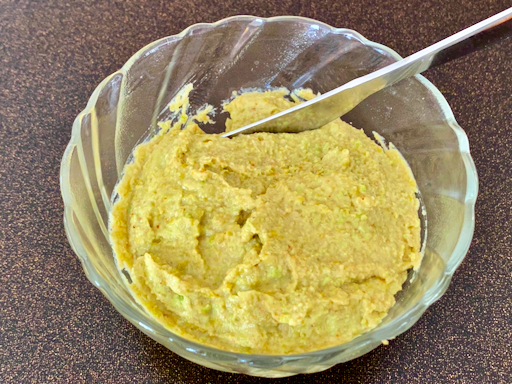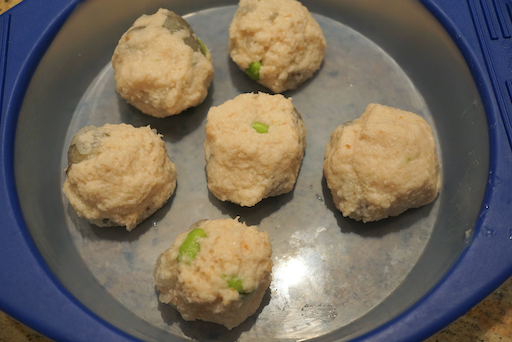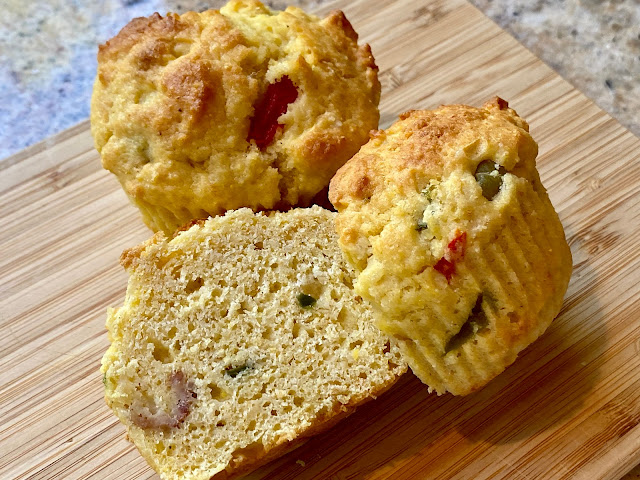We usually stock frozen edamame since it is a good and healthy snack. Recently, we found the frozen edamame from a frozen case at Tako Grill to be the best. My wife, found a recipe for "edamame hummus" in the cookbook called "Smoke and Pickles" by Edward Lee which we recently acquired. It used shelled edamame. My wife wanted to make this dish but she thought rather than using our stash of edamame which was in the shell and would have to be shelled it would be better to order some frozen edamame that was already out of the shell. So we ordered some from our regular grocery store. When deciding what to order we could not figure out if the packages available were edamame shelled or in pods. We took a chance and ordered one anyway and it turned out they were in the pods so they had to be shelled anyway. My wife cooked up the package and shelled them making about 1 cup. She turned the prepared edamame over to me to make the hummus. I diverted from the original recipe a bit but the resulting dip/hummus was quite good.
1 cup edamame, cooked and shelled
1/2 shallot, finely chopped
3 garlic cloves,
1/4 cup lemon juice
1/2 tbs soy sauce
1/4 cup smooth peanut butter (or tahini or Japanese nerigoma sesame paste)
1/2 tsp ground cumin
1tsp salt
1/2 cup water (I did not add the water but I added hot water -may be 1-2 tsp to the peanut butter mixutre to make it looser)
2 tbs olive oil (1/2 tbs to sautee shallot and the remaining mixed into the final product)
Directions:
Mix the peanut butter, soy sauce and hot water to make smooth loose paste.
Heat the olive oil and sauté the shallot and then garlic, add the peanut butter mixture, the edamame and heat up (below).
Using a beaker and emersion blender, process the above mixture. I added additional olive oil to make the mixture a bit smoother. Add lemon juice and cumin. Taste and add a small amount of salt to taste.
















































